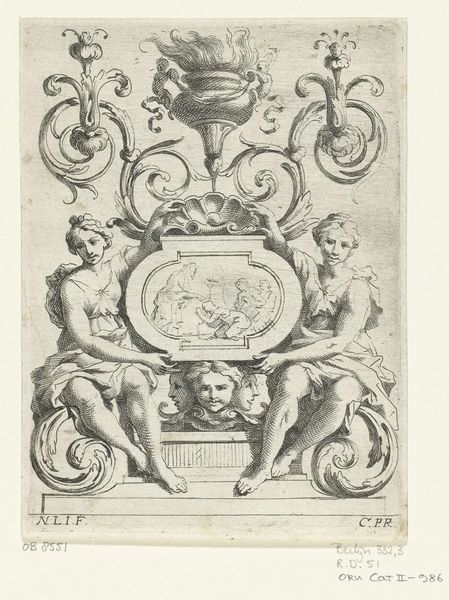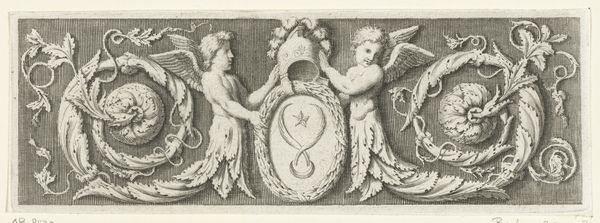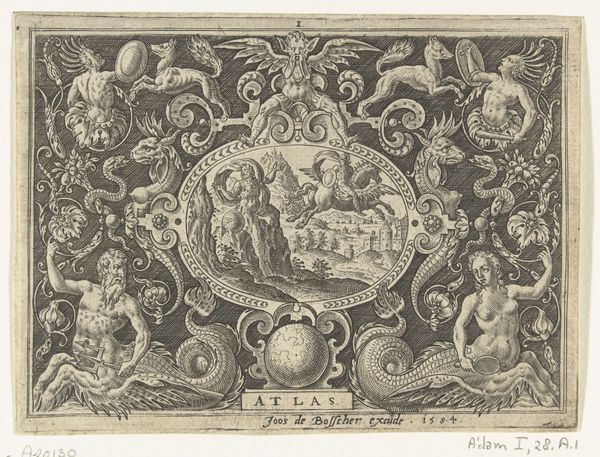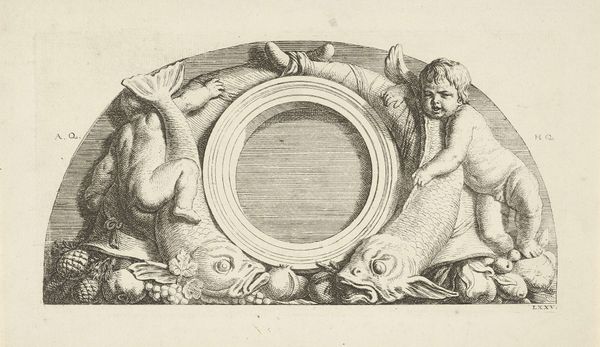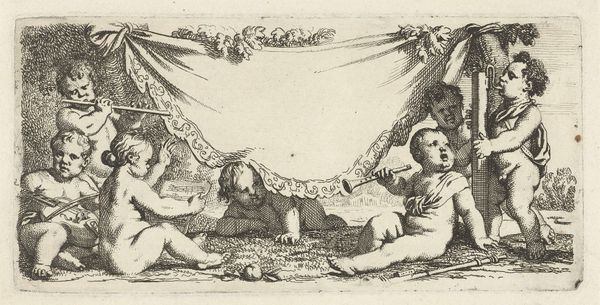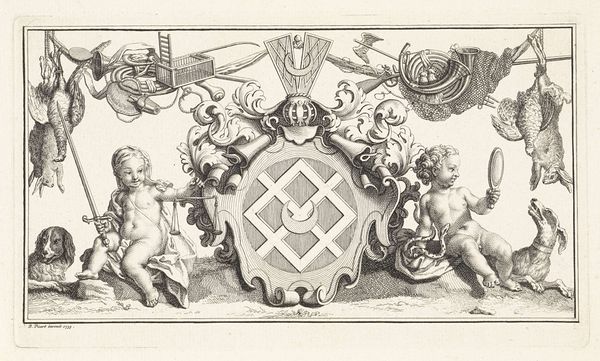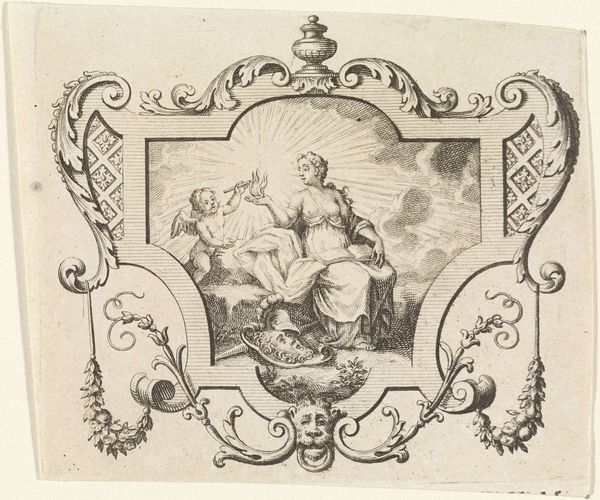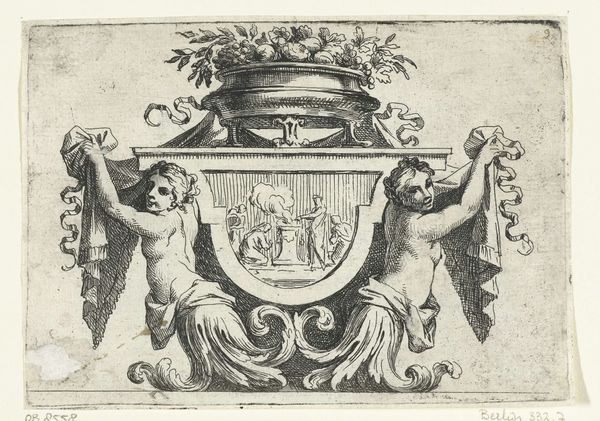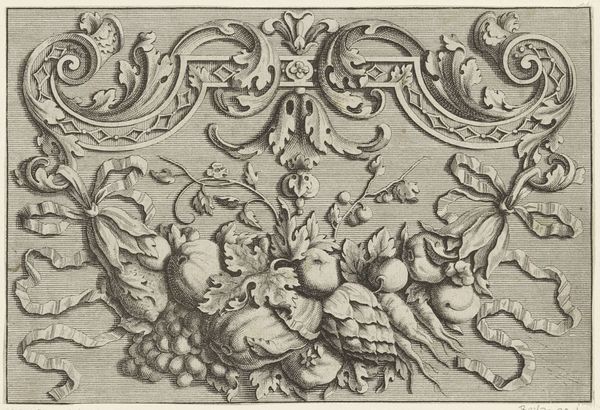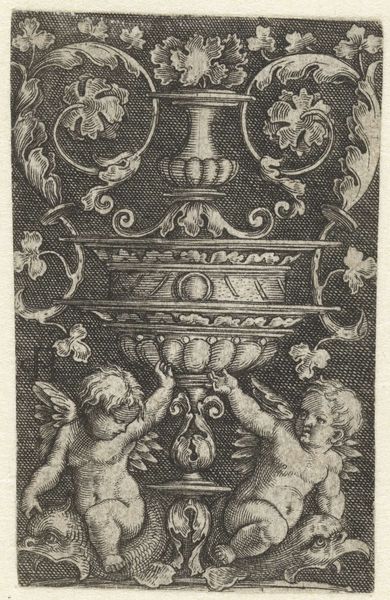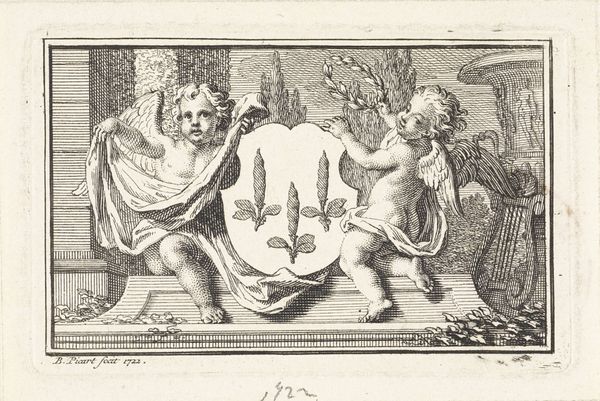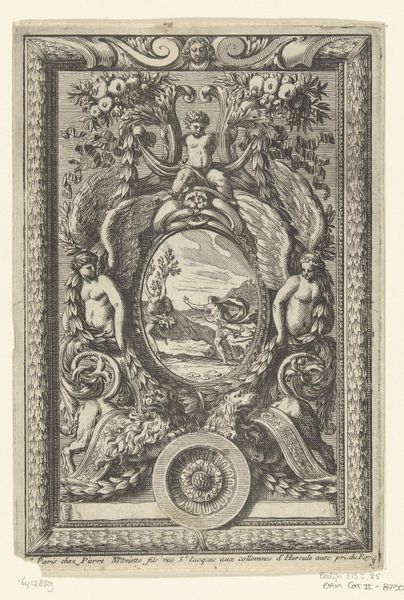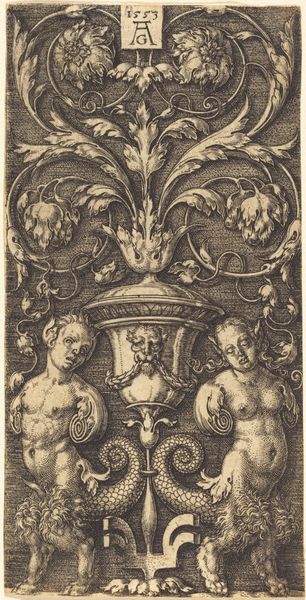
drawing, graphic-art, print, relief, paper, ink, pen, engraving
#
drawing
#
graphic-art
# print
#
relief
#
paper
#
11_renaissance
#
ink
#
pencil drawing
#
coloured pencil
#
pen
#
history-painting
#
engraving
Dimensions: 92 × 160 mm
Copyright: Public Domain
Curator: Let's discuss this undated print titled "Medici Coat of Arms Flanked by Putti," attributed to an anonymous artist and currently residing at the Art Institute of Chicago. The medium is described as a combination of drawing, graphic art, and relief, using materials like paper, ink, pen, and engraving. What strikes you most about it initially? Editor: The intense detail in the line work catches my eye. I mean, look at how the artist has captured the texture of the fabric draped beneath the coat of arms and the way they've rendered those putti! It suggests a high level of craft and possibly multiple stages of production to achieve this effect with printmaking, considering it employs various techniques. Curator: Absolutely, the detailed line work is captivating! Considering the historical context, the Medici family's power was deeply interwoven with its patronage of the arts. How might we read this heraldic image, intended to assert dynastic authority, within that framework of Renaissance power and politics? Editor: The material aspect reflects that power quite clearly. Engravings like this were, in a sense, reproducible assets. By circulating images of their coat of arms, the Medici reinforced their brand, their power extending not just through physical territories but also through distributed visual representation. Who produced the print, the engraver, becomes crucial, as their labor physically manifested and replicated Medici's authority. Curator: That's a brilliant point regarding labor. We should remember, though, that representations of power often carried symbolic weight. The putti, the crown, the heraldry itself all contributed to a constructed image of legitimacy. It would be intriguing to research who had access to these images and in what spaces these images would appear, helping the public to think of Medici authority. Editor: Exactly, analyzing its circulation informs us of who this image was *for*, not just who it was *of*. Understanding how this image was printed and consumed, whether through individual prints, bound volumes, etc., provides more granular insight into labor and class dynamics during that time, and reminds us of materiality, the very basis of its production, consumption and dissemination. Curator: This has truly opened a dialogue to think further about not just who these images were about, but the communities that the Medici impacted, influenced, and in some instances repressed, while also acknowledging the materials of production and dissemination, helping to solidify them into power. Editor: It's a vital reminder to look beyond the symbolic weight, into the weight of materials, tools, and hands, when we want to fully examine historical significance and societal impact.
Comments
No comments
Be the first to comment and join the conversation on the ultimate creative platform.

